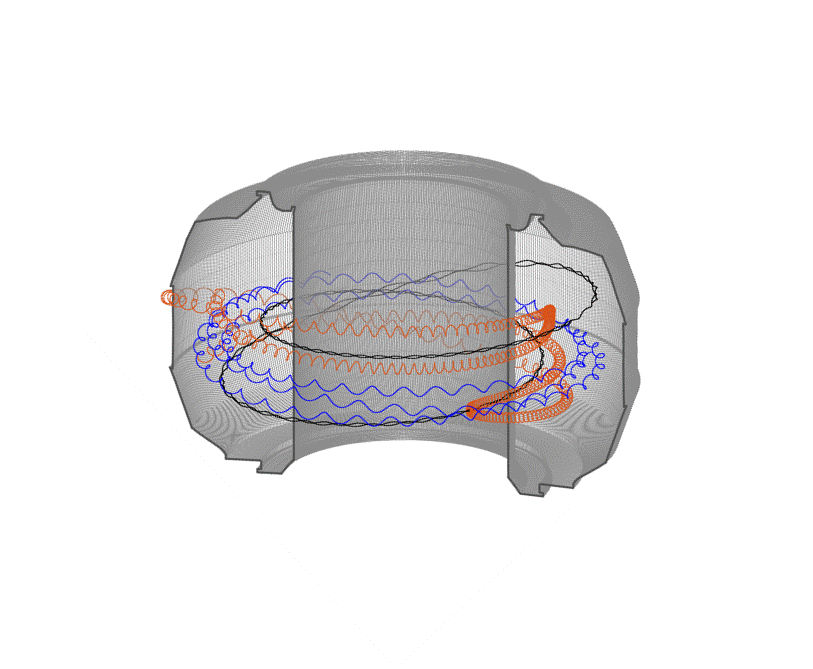
Filter News
Area of Research
- Advanced Manufacturing (3)
- Biology and Environment (69)
- Clean Energy (50)
- Climate and Environmental Systems (1)
- Computational Biology (2)
- Computational Engineering (1)
- Computer Science (6)
- Electricity and Smart Grid (3)
- Functional Materials for Energy (1)
- Fusion and Fission (22)
- Fusion Energy (11)
- Isotope Development and Production (1)
- Isotopes (21)
- Materials (60)
- Materials for Computing (8)
- National Security (21)
- Neutron Science (65)
- Nuclear Science and Technology (15)
- Quantum information Science (1)
- Sensors and Controls (1)
- Supercomputing (29)
News Type
News Topics
- (-) Biology (84)
- (-) Fusion (48)
- (-) Grid (49)
- (-) Irradiation (3)
- (-) Isotopes (40)
- (-) Machine Learning (35)
- (-) Neutron Science (86)
- (-) Physics (39)
- (-) Polymers (22)
- 3-D Printing/Advanced Manufacturing (90)
- Advanced Reactors (26)
- Artificial Intelligence (69)
- Big Data (48)
- Bioenergy (73)
- Biomedical (44)
- Biotechnology (14)
- Buildings (43)
- Chemical Sciences (46)
- Clean Water (27)
- Climate Change (79)
- Composites (21)
- Computer Science (143)
- Coronavirus (32)
- Critical Materials (17)
- Cybersecurity (23)
- Decarbonization (58)
- Education (1)
- Emergency (2)
- Energy Storage (75)
- Environment (161)
- Exascale Computing (30)
- Fossil Energy (5)
- Frontier (29)
- High-Performance Computing (67)
- Hydropower (11)
- ITER (6)
- Materials (109)
- Materials Science (100)
- Mathematics (9)
- Mercury (10)
- Microelectronics (2)
- Microscopy (39)
- Molten Salt (7)
- Nanotechnology (40)
- National Security (49)
- Net Zero (11)
- Nuclear Energy (87)
- Partnerships (24)
- Quantum Computing (27)
- Quantum Science (44)
- Renewable Energy (1)
- Security (15)
- Simulation (43)
- Software (1)
- Space Exploration (23)
- Statistics (2)
- Summit (39)
- Sustainable Energy (100)
- Transformational Challenge Reactor (4)
- Transportation (72)
Media Contacts
Physicists turned to the “doubly magic” tin isotope Sn-132, colliding it with a target at Oak Ridge National Laboratory to assess its properties as it lost a neutron to become Sn-131.

Oak Ridge National Laboratory scientists have devised a method to control the heating and cooling systems of a large network of buildings for power grid stability—all while ensuring the comfort of occupants.

Three researchers from the Department of Energy’s Oak Ridge National Laboratory have been elected fellows of the American Physical Society (APS). Fellows of the APS are recognized for their exceptional contributions to the physics enterprise in outstanding resear...

Mircea Podar has travelled around the world and to the bottom of the ocean in pursuit of scientific discoveries, but it is the uncharted territory he encounters when working with new microbes that inspires his research at ORNL.

Fusion scientists from Oak Ridge National Laboratory are studying the behavior of high-energy electrons when the plasma that generates nuclear fusion energy suddenly cools during a magnetic disruption. Fusion energy is created when hydrogen isotopes are heated to millions of degrees...

Oak Ridge National Laboratory scientists have developed a crucial component for a new kind of low-cost stationary battery system utilizing common materials and designed for grid-scale electricity storage. Large, economical electricity storage systems can benefit the nation’s grid ...

An Oak Ridge National Laboratory–led team has developed super-stretchy polymers with amazing self-healing abilities that could lead to longer-lasting consumer products.

A tiny vial of gray powder produced at the Department of Energy’s Oak Ridge National Laboratory is the backbone of a new experiment to study the intense magnetic fields created in nuclear collisions.

Energy storage could get a boost from new research of tailored liquid salt mixtures, the components of supercapacitors responsible for holding and releasing electrical energy. Oak Ridge National Laboratory’s Naresh Osti and his colleagues used neutrons at the lab’s Spallation Neutron ...

“Made in the USA.” That can now be said of the radioactive isotope molybdenum-99 (Mo-99), last made in the United States in the late 1980s. Its short-lived decay product, technetium-99m (Tc-99m), is the most widely used radioisotope in medical diagnostic imaging. Tc-99m is best known ...


